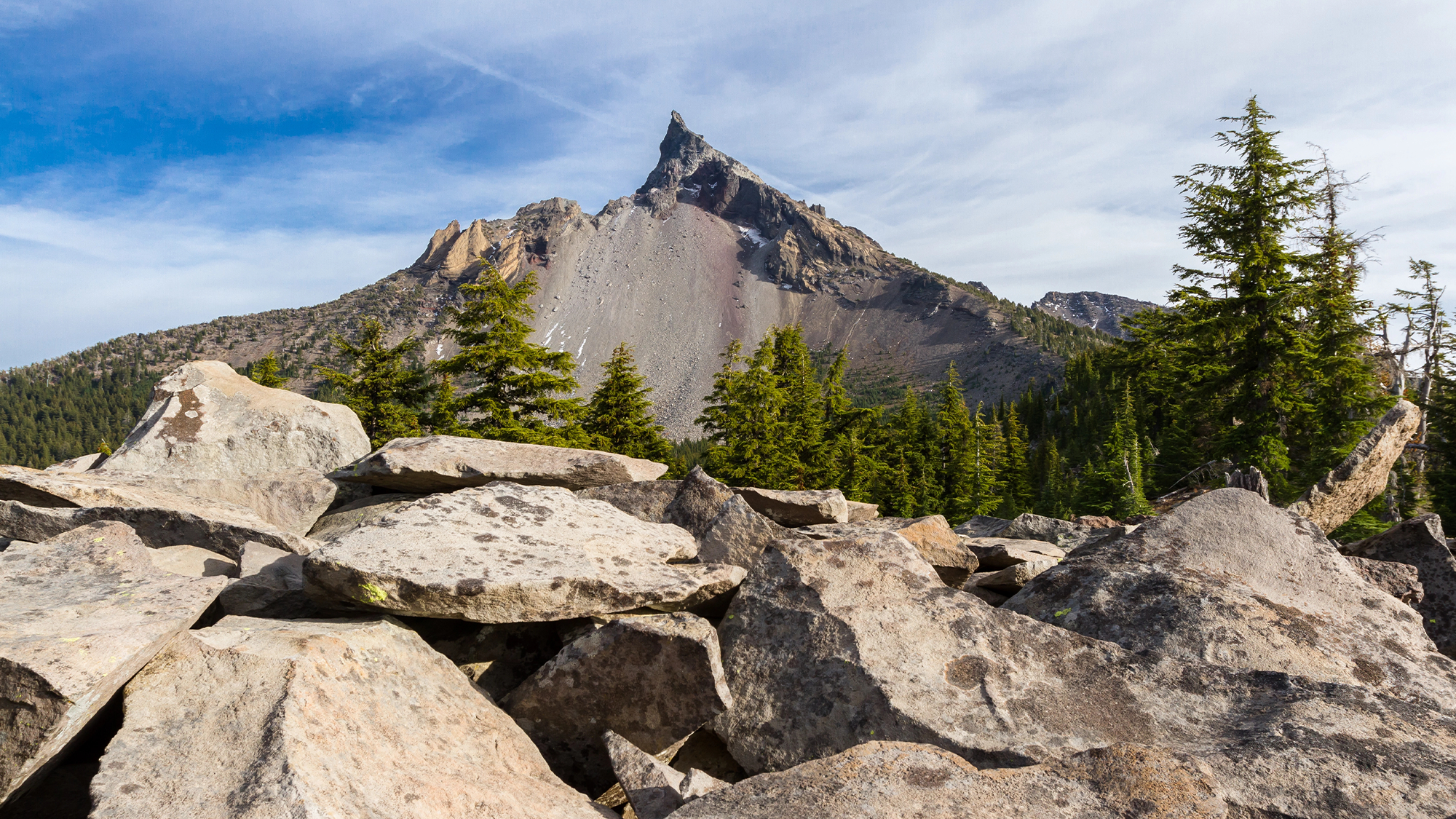

Earth’s extinct volcanoes might be an untapped source of highly in-demand rare earth elements. A set of lab-based experiments revealed that some of these 17 elements could be lurking in the mysterious iron-rich magma entombed within these formerly explosive landforms. The findings are detailed in a paper published September 24 in the journal Geochemical Perspectives Letters.
Extinct volcanoes are volcanic mountains that scientists believe won’t erupt again. According to the USGS, it is fairly easy to determine that some volcanoes are extinct. Mount Thielsen in Oregon last erupted about 300,000 years ago and erosion has worn away much of its cone. The mountain was cold and quiet and its volcanic period is clearly over. However, other volcanoes–including the infamous Mount Saint Helens–can go dormant for tens of thousands of years before erupting again. There is simply not enough reliable geological data on some volcanoes to truly declare them extinct.
[Related: Inside the high-powered process that could recycle rare earth metals.]
Extinct volcanoes could be a source of rare earth elements, including gadolinium, praseodymium, cerium, samarium, lanthanum, and neodymium. Rare earth elements are needed to make devices we use everyday–smartphones, tablets, flat screen televisions, magnets, and even missiles and trains. They are also needed to help build better renewable energy technologies, including wind turbines and electric car batteries. Rare earth elements themselves are fairly abundant, but their concentration levels within ores can be fairly low.
“Rare earth elements aren’t that rare,” study co-author and Australia National University geochemist Michael Anenburg said in a statement. “They are similar in abundance to lead and copper. But breaking down and extracting these metals from the minerals they reside in is challenging and expensive.”
To find new sources of rare earth elements, Anenburg and co-authors from the University of the Chinese Academy of Sciences looked at the iron-rich magma from extinct volcanoes. According to the team, this magma is up to 100 times more efficient at concentrating rare earth metals than the magmas that commonly erupt from active volcanoes.
The team simulated volcanic eruptions in the lab by using rocks that are similar to those found in iron-rich extinct volcanoes. The rocks were put into a pressurized furnace to heat them at extremely high temperatures. They eventually melted and the team peered at the elements inside the rocks. They saw magmatic-hydrothermal fluid bubbles and iron oxide-bubble pairs, indicating that some rare earth elements like lanthanum, cerium, neodymium are present within the magma.
[Related: The elements we might mine on the moon.]
“We have never seen an iron-rich magma erupt from an active volcano, but we know some extinct volcanoes, which are millions of years old, had this enigmatic type of eruption,” said Anenburg. “Our findings suggest that these iron-rich extinct volcanoes across the globe, such as El Laco in Chile, could be studied for the presence of rare earth elements.”
While currently at the experimental stage, the results indicate that extinct volcanoes could be a place to look for these elements. Diamonds and copper are already mined in eroded or extinct volcanoes, but that does not mean it is without risk since we do not have enough geological data on some potentially extinct volcanoes.
Demand for rare earth elements is expected to increase fivefold by 2030, as more countries shift towards renewable energy and cleaner technologies. China currently has the largest known deposit of rare earth elements on the planet. Sweden is home to Europe’s largest deposit of rare earth minerals, and Australia is home to one at Mount Weld and others near Dubbo and Alice Springs. They have also been found at the Mountain Pass mine in California and potential deposits could also be in Alaska, Wyoming, and Texas.
 Print
Print


